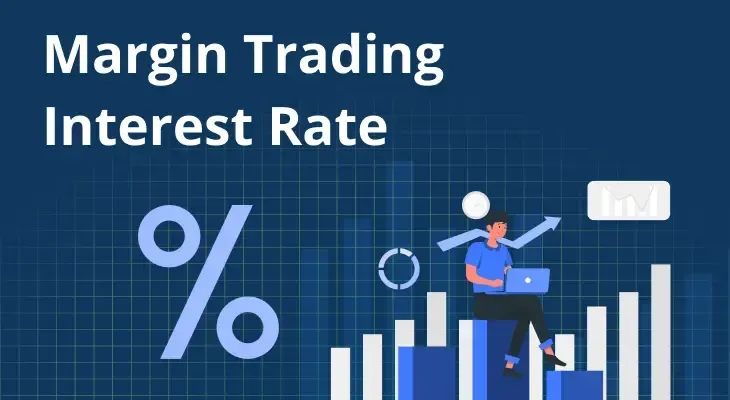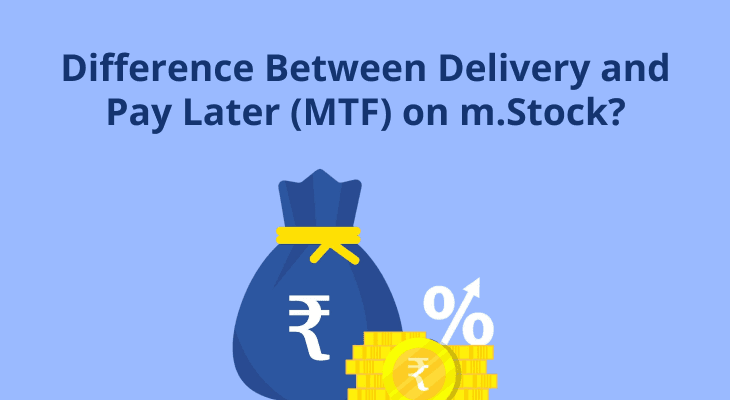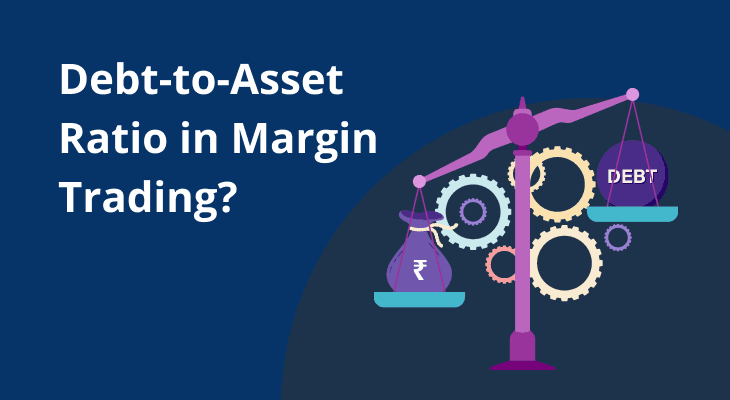
What is the Rate of Interest Charged on Margin Trading Facility?
If you are an active investor or trader in India, you may have come across the concept of margin trading. This financial tool allows you to leverage your capital and borrow funds from your broker to increase your purchasing power and potentially magnify your returns. However, before engaging in margin trading, it is crucial to grasp the concept of the Margin Trading Interest Rate, commonly known as MTF interest rate or interest on margin trading.
In this blog, we will explore the rate of interest charged on margin trading facilities, commonly known as Margin Trading Interest Rate or MTF interest rate. We will also delve into the factors that affect the rate, how it is calculated, and the potential penalties on unsettled margin. Let's dive in and gain a better understanding of this crucial aspect of margin trading.
Interest on Margin Trading
Margin trading involves using borrowed funds from your broker to execute trades in the financial markets. The interest charged on this borrowed amount is referred to as the "margin trading interest rate". It represents the cost of borrowing and is calculated based on the rate of margin, which is the percentage of the total value of the trade that you need to deposit as collateral.
The margin trading interest rate is an essential component to consider as it directly affects the overall cost of your trades. It can significantly impact your profits or losses, making it crucial to comprehend how it works and evaluate its implications before engaging in margin trading.
What is the Penalty on Unsettled Margin?
Margin trading can be a double-edged sword. While it offers the potential for higher returns, it also exposes traders to higher risks. One of the critical aspects to be aware of is the penalty imposed on unsettled margin positions. If you fail to settle your margin balance within the stipulated time frame, usually by the end of the trading day, brokers may charge a penalty or impose higher interest rates for an extended period.
The penalty on unsettled margin can quickly accumulate, potentially eroding your profits or even leading to substantial losses if the trade does not go as planned. As a responsible trader, it is vital to stay on top of your margin positions and ensure timely settlements to avoid unnecessary penalties and costs.
How to Calculate Interest on Margin?
Calculating the interest on margin can be relatively straightforward once you understand the formula and have the necessary information at hand. The interest calculation is based on the amount of margin used, the margin trading interest rate, and the time period for which the margin is held. The formula for calculating the interest on margin is as follows:
Interest on Margin = (Margin Used × Margin Trading Interest Rate × Time Period) / 365
Here,
Margin Used: Refers to the amount of margin borrowed from the broker.
Margin Trading Interest Rate: The annualised interest rate charged by the broker on the borrowed funds.
Time Period: The number of days for which the margin is held.
It's important to note that the time period is usually expressed in days and is divided by 365 to convert the interest rate to a daily rate. Some brokers may use a 360-day divisor instead of 365.
Let's look at an example to understand the calculation better:
Suppose you borrow ₹1,00,000 on margin from your broker, and the margin trading interest rate is 12% per annum. You hold this position for 20 days. Let's calculate the interest on the margin:
Interest on Margin = (₹1,00,000 × 0.12 × 20) / 365 Interest on Margin = ₹657.53
In this example, you would need to pay ₹657.53 as interest on the margin after holding the position for 20 days.
The interest rate charged may vary based on the broker and the specific financial instruments being traded. Always check with your broker for the most up-to-date information on interest rates and charges. You can also use m.Stock's MTF calculator for accurate calculations.
Conclusion
Margin trading can be a powerful tool for experienced investors and traders to enhance their potential returns. However, it comes with certain risks and costs, with the margin trading interest rate being a crucial factor to consider. The rate of interest charged on the borrowed funds can significantly impact your trading results, either positively or negatively, depending on market movements and your trading strategies.
When engaging in margin trading, always ensure you are well informed about the interest rates charged by your broker, the penalties on unsettled margin, and how to calculate the interest on margin. Being aware of these factors will help you make informed decisions, manage your risks effectively, and maximise the benefits of margin trading while safeguarding your capital.
Remember, margin trading is not suitable for all investors, and it is essential to assess your financial situation and risk tolerance carefully before participating in such activities.
FAQ
What happens if I can't meet a margin call?
A margin call occurs when the value of your margin account falls below a certain threshold set by the broker, known as the maintenance margin requirement. If you fail to meet a margin call, your broker may liquidate some or all of your positions to bring the account back to the required level. This could result in significant losses for you, and it's crucial to monitor your account regularly and be prepared to add more funds if necessary to avoid margin call situations.
What is MTF interest rate?
MTF interest rate stands for "Margin Trading Facility interest rate." It represents the rate at which the broker charges interest on the funds borrowed for margin trading. It is essential to be aware of this rate as it directly impacts the cost of borrowing and can influence your trading outcomes.
What is the rate of margin?
The rate of margin, also known as the margin requirement, is the percentage of the total trade value that you must deposit as collateral to engage in margin trading. It varies depending on the financial instruments and the broker's policies.
How much interest does the broker charge for margin?
The interest rate charged on margin trading can vary from one broker to another. It is typically expressed as an annual percentage rate (APR) and is applied to the amount of margin used. The actual interest rate may depend on factors such as the broker's policies, the size of the margin position, and the specific financial instruments being traded.
How much margin is safe?
The amount of margin considered safe can vary based on individual risk tolerance and trading strategies. While margin trading offers the potential for higher returns, it also exposes traders to increased risks. It is essential to have a thorough understanding of the financial markets, proper risk management practices, and a well-thought-out trading plan when using margin to ensure safety and avoid excessive losses.
Can the margin trading interest rate change over time?
Yes, the margin trading interest rate is not fixed and can change over time. Brokers may adjust the interest rate based on various factors, including prevailing market conditions, changes in central bank policies, and the overall economic environment. It is essential to stay informed about any changes in the interest rate and how they might impact your trading costs and overall profitability.


